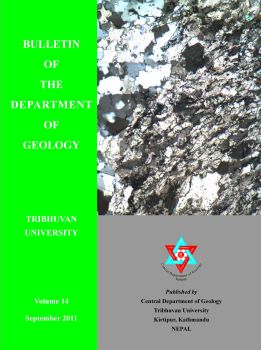Paleolimnology of Lake Yamanaka as reflected on particle-size distribution
DOI:
https://doi.org/10.3126/bdg.v14i0.5437Keywords:
Paleolimnology, Lake, YamanakaAbstract
A 17.63 m long bore-hole core extracted from the deepest part of Lake Yamanaka, one of the Fuji-five Lakes at the northeasternfoot of Mount Fuji, central Japan, composed of sediment with intercalations of scoria fallout deposits. The sediment of the upper11.4 m was investigated for grain-size distribution by using a laser diffraction particle size analyser. The mean grain-size profileshowed various degrees of fluctuations, both short-and long-terms, and the size-frequency distribution revealed unimodal-trimodalmixing of sediments. Changes in lake size and water depth appear to be the main factors affecting the variability in the grain-sizedistribution and properties. The lake level appears low during 7000–5000 cal BP and 2800–1150 cal BP and relatively high during5000–2800 cal BP and 1150 cal BP– present.
DOI: http://dx.doi.org/10.3126/bdg.v14i0.5437
Bulletin of the Department of Geology Vol.14 2011, pp.35-42
Downloads
670
989
Downloads
How to Cite
Issue
Section
License
© Central Department of Geology, Tribhuvan University, Nepal

